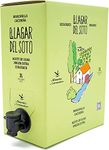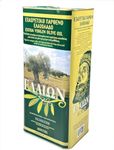Buying Guide for the Best Organic Olive Oils
Choosing the right organic olive oil can greatly enhance your culinary experiences and contribute to a healthier lifestyle. Organic olive oils are made from olives that are grown without the use of synthetic pesticides or fertilizers, ensuring a more natural product. When selecting an olive oil, consider the flavor profile you prefer, the intended use, and the quality indicators that can help you make an informed decision. Understanding the key specifications of organic olive oils will guide you in selecting the best option for your needs.Type of Olive OilOlive oil comes in several types, including extra virgin, virgin, and refined. Extra virgin olive oil is the highest quality, made from pure, cold-pressed olives, and retains the most flavor and nutrients. Virgin olive oil is also made from pure olives but may have a slightly higher acidity. Refined olive oil is processed to remove flaws and has a more neutral taste. If you want robust flavor and health benefits, extra virgin is the best choice. For cooking at higher temperatures, refined olive oil might be more suitable due to its higher smoke point.
Flavor ProfileThe flavor of olive oil can range from mild to robust, with notes of fruitiness, bitterness, and pepperiness. Mild oils are often buttery and smooth, suitable for baking or as a subtle dressing. Medium oils have a balanced taste, ideal for everyday cooking. Robust oils are bold and peppery, perfect for drizzling over salads or finishing dishes. Consider what dishes you plan to use the oil for and choose a flavor profile that complements those foods.
Acidity LevelAcidity in olive oil is a measure of the free fatty acids present, which can affect taste and quality. Extra virgin olive oils have an acidity level of less than 0.8%, indicating high quality. Lower acidity levels generally mean a fresher, better-tasting oil. If you're looking for the best quality, aim for oils with the lowest acidity levels, especially if you plan to use the oil raw in dressings or dips.
Harvest DateThe harvest date indicates when the olives were picked and processed. Fresher olive oil tends to have better flavor and nutritional value. Olive oil is best consumed within 18-24 months of harvest, so look for a recent harvest date to ensure you're getting a fresh product. If you use olive oil frequently, a more recent harvest date will ensure you enjoy the best taste and health benefits.
Certification and OriginCertification ensures that the olive oil meets certain standards for organic production. Look for certifications from reputable organizations to ensure the oil is truly organic. The origin of the olive oil can also affect its flavor and quality, as different regions produce oils with distinct characteristics. If you have a preference for a particular region's flavor profile, such as Italian or Spanish, consider this when making your choice.
















